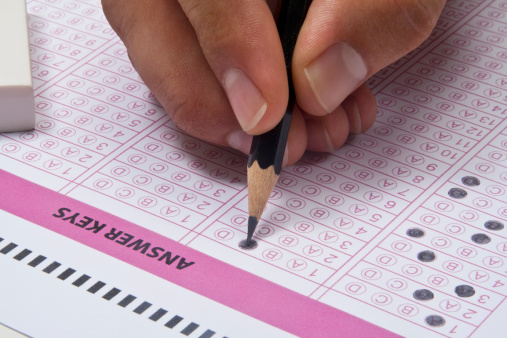
By now, it is likely not news that the SAT is undergoing a comprehensive revision. Unfortunately for test-takers who will sit for the Redesigned SAT soon after its 2016 release, prep materials for the exam are relatively scarce. Despite this reality, there are still ways to ready yourself. Here are five such tips:
1. Practice with graphs
The Math section of the Redesigned SAT will increase its focus on algebraic and general problem solving, as well as data interpretation. Geometry will still be present, but it will account for a much smaller portion of the test.
To prepare for this shift, review and practice with ACT Science materials. Both ACT Science and SAT Math employ data interpretation and graphing skills, so the time you spend on one exam can benefit you on the other. Due to this increased overlap, it may even make sense to take both the SAT and the ACT. A number of colleges accept both tests, and many will use the score that is most advantageous to you.
2. Learn to work without a calculator
One of the most significant changes on the Math section is a calculator-free portion. This allows the SAT to test for real mathematical understanding, as opposed to the ability to enter numbers into a machine. It is essential to ensure that you can solve the problems outlined above (save for data analysis) without your calculator, so consider completing all your math homework and test practice by hand. This may make the work harder in the short term, but in the long term, you will be ready for this section of the Redesigned SAT.
3. Understand new answer formats
In the past, if a student was struggling with a specific portion of the SAT, I would sometimes recommend that he or she skip the most difficult questions, as wrong answers negatively impacted overall scores. On the Redesigned SAT, that advice is no longer relevant. You will no longer be penalized for wrong answers, and this means that there is no longer a reason to leave any questions blank. Random guessing will remain ineffective, but eliminating even one incorrect answer choice can lead to an improvement in your overall score. When you prepare for the exam, focus on not just finding the correct answers, but on quickly identifying incorrect responses too. This can include “guesstimating” Math questions, and avoiding Evidence-Based Reading and Writing answers that deal in absolutes.
Another important change in answer formats will be the extended-thinking question in the Math section. This question will be a word problem followed by several related questions, all of which test your problem solving skills. The answers to these questions will be “open” (or student produced), rather than multiple-choice. One way to start preparing for the extended-thinking question is to treat all math problems as essentially “open” – solve each practice question with the possible responses covered, and write your answer in the margin. After you finish, compare your result with the answer key. This process will not only help you improve in extended-thinking, but you will almost certainly become stronger with multiple-choice questions, as well.
4. Focus more on reading and less on vocabulary
The Redesigned SAT will feature a single Evidence-Based Reading and Writing portion. Here, the primary shift will be an emphasis on parsing real-world texts. Vocabulary will still be relevant insofar as you will need to understand what you read. Gone, however, will be the esoteric terms that characterized earlier versions of the SAT. Instead of memorizing lists of vocabulary words, work on “unpacking” passages. As one example, this sample question requires students to define “parties” given the specific context of the passage. “Parties” is not a challenging term in and of itself, but determining the shade of meaning that is appropriate to the context can be.
Study materials developed for the Literature SAT Subject Test can be helpful when preparing for the Redesigned SAT since analysis will be much more important than regurgitation. The test will also use real-world documents drawn from various realms of history and culture. You cannot possibly read every important document, but you can browse several from each era so that the language is somewhat familiar to you come exam day.
5. Investigate the essay
Beginning in spring 2016, the essay portion of the SAT will no longer be required for all students. Many schools may still ask test-takers to submit it, but you will need to investigate this on a case-by-case basis. If none of your top-choice colleges ask for it, you may decide to opt against the essay. If you do need to complete the essay, be aware that it, too, is in the midst of a transformation. Specifically, you will now be asked to provide a critical evaluation of a provided passage, rather than your own free-form response to an open-ended topic. Critical analysis is a very different technique to wield, but the skills you learn while preparing for Evidence-Based Reading and Writing will stand you in good stead.
Brian Witte is a professional SAT tutor with Varsity Tutors. He earned his Bachelor of Science from the University of Washington and holds a Ph.D. from The Ohio State University.
More from Varsity Tutors:
More Must-Reads from TIME
- Cybersecurity Experts Are Sounding the Alarm on DOGE
- Meet the 2025 Women of the Year
- The Harsh Truth About Disability Inclusion
- Why Do More Young Adults Have Cancer?
- Colman Domingo Leads With Radical Love
- How to Get Better at Doing Things Alone
- Michelle Zauner Stares Down the Darkness
Contact us at letters@time.com